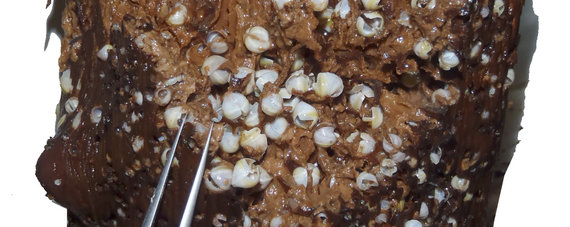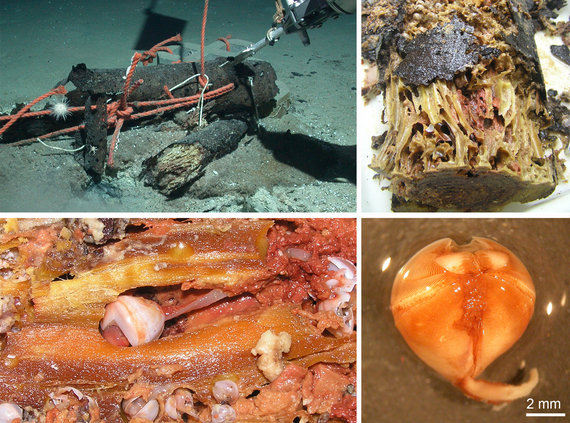- Departments
- Department of Symbiosis
- Research
- Symbioses in wood-boring bivalves
Symbioses in wood-boring bivalves
Christian Borowski
Wood-boring bivalves digest wood with the help of symbiotic bacteria in their gills. Bivalves of the subfamily Xylophagainae are the primary degraders of sunken wood on the deep sea floor, but very little is known about their symbionts. We use molecular methods to investigate the symbiont diversity and biogeographic patterns within Xylophagainae collected at various locations in the deep Mediterranean and adjacent areas of the Atlantic Ocean.

Sunken wood provides organic falls to the deep-sea floor that are rapidly colonized and degraded by wood-boring Xylophagainae bivalves (Family Pholadidae). These deep-water clams occupy the same ecological niche as their shallow-water counterparts of the clam family Teredinidae, the so-called shipworms, but they usually do not co-occur in the same habitat. While shipworms colonize drift wood that remains in surface waters, Xylophagainae larvae settle on sunken wood in moderate to abyssal water depths. Both groups harbor symbiotic bacteria in their gills that are assumed to play a significant role in wood digestion. While shipworm symbionts have been identified as cellulolytic and nitrogen-fixing Gammaproteobacteria, very little is known about the symbionts of Xylophagainae.

As part of the cooperative program DIWOOD funded by the Max Planck Society and the French Centre National de la Recherche Scientifique (CNRS), we are investigating the symbionts of Xylophagainae using molecular methods with a major focus on the following questions:
- What is the phylogenetic relationship between symbionts of the two clam groups?
- What is the biodiversity among symbionts of different Xylophagainae host species?
- How specific are symbiont-host associations?
- Which biogeography patterns are discernable?
Xylophagainae are rarely collected by conventional sampling methods because their habitats are small and widely scattered on the deep sea floor. We therefore attracted Xylophagainae with experimental deployments of fresh wood in 600–1700 m water depth in the deep Mediterranean and adjacent areas in the Atlantic Ocean. Several months later we used unmanned submersibles for collecting the colonized wood. Our collections contained several host species, some of them co-occurring at the same collection sites and even in the same wood logs. Phylogenetic analyses of the bacterial 16S rRNA gene revealed that the diversity of bacteria associated to Xylophagainae is greater than expected. Many symbionts are closely related to shallow water shipworm symbionts suggesting that Xylophagainae symbionts have a similar metabolism and produce cellulases for the wood digestion and fix nitrogen from seawater. Continuing in-depth study of the symbionts will provide first knowledge on symbiont-host relationships and their roles in the Xylophagainae symbiosis.